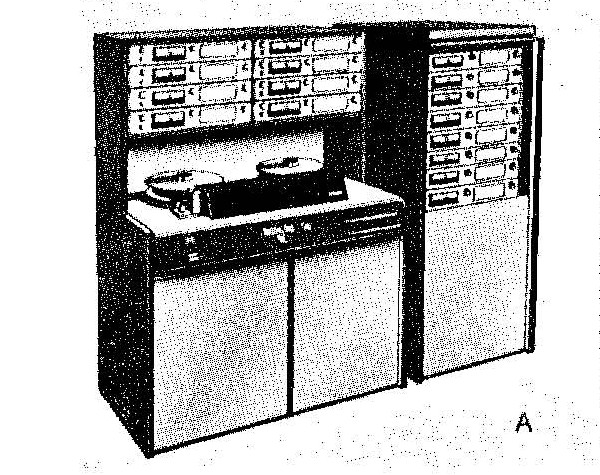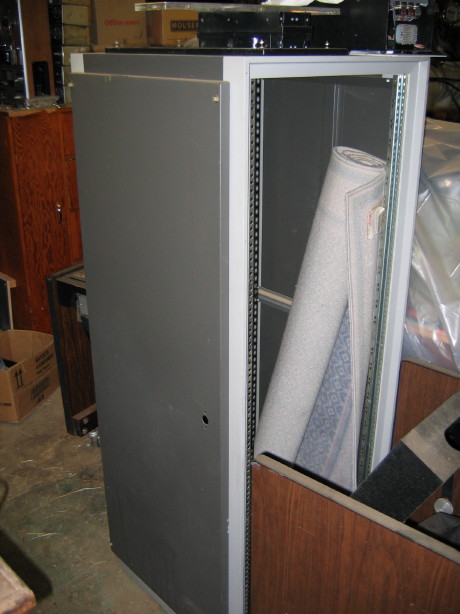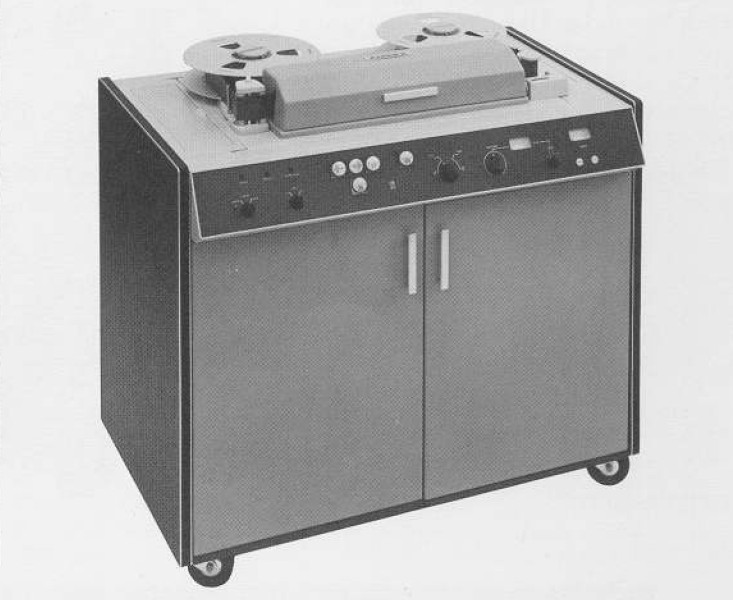sweetbeats
Reel deep thoughts...
Boy Cory, you've mentioned in the past how you didn't relish dealing with control logic issues like I did with the MCI machine, but reading your last two posts gave me some transport control flashbacks alrightIn your case it's looking at voltages through relays, in mine it was probing IC pins. I know squat about Ampex transports, I wish I could help advise there! It's too bad it doesn't seem to be something simple like dirty contacts, I know firsthand how oxidation can cause gremlins.
Yeah...I kind of realize that its just two flavors of the same issue but I think for me I start getting lost when looking at the schematic of a logic circuit with IC's because there's a whole 'nuther layer down below what's on the schematic with the IC's. You can see the ins and outs of the IC but then you have to pull the spec sheet for the IC to understand what those pins do. I suppose if I dealt with a particular set of IC's on a frequent basis it may be different in that I'd have the pin functions memorized like I do for standard DIP-8 opamp packages...its just a matter of working with them, but a 14-pin comparator chip is just alien to me and I sort of get stopped-up going back and forth between the pinout for the IC and the schematic. Maybe someday, and only if necessary. For now its great to see everything all on one layer and to be able to go to the physical assembly and see/touch all the stuff displayed on the schematic.
I did some more gazing of schematics...the control box, control panel, transport, mode control schematics and the wiring diagram that ties them all together. Again, though it is mentally strenuous for me at times, these kinds of problems really ultimately bring a level of comfort and familiarity with a device and I am enjoying this level of acclimation with the Ampex. At this point I have a suspicion that the connection between the +24V power rail and the PLAY button may be needing some attention. After studying the above schematics I understand that what is happening is indeed outside the control box because when I route power to the appropriate places within the control box everything works like a charm, and that what is happening when there is a delay in the transport actually dropping into PLAY mode after the PLAY button is pressed is the exact same thing it would do if the supply reel wasn't stopped yet...if you are fast-winding, for instance, the motion-sense assembly (which ain't a fancy thing really from an electronic standpoint...just +24V in and two microswitches that route the power one place when the motor is turning and another place when it ISN'T turning) blocks power from getting to the PLAY button. If the tape is still coasting to a stop from a fast-wind mode you don't WANT the pinch roller dropping in. Duh. So K4 latches and puts things into a ready state, and then as soon as the transport comes to an actual stopped state the motion-sense assembly switches route power to the PLAY button which then goes to the appropriate terminals on K4 which are closed with K4 in its "ready state" and that then closes K6. Well, if there is anything sketchy in the path from the +24V supply to the motion-sense assembly to the control panel to the relay box then there will be intermittency in K6 closing. I betcha there are dirty contacts or bad connections somewhere in there. There is actually quite a bit of wire and quite a number of connections that are in that path. I replaced the motion-sense microswitches so I'm pretty confident that all those connections are good but it won't hurt to check those. Its all guilty until proven innocent here. I'll start with simple continuity testing from the +24V supply out to the relay box to pin 19 on J2 of the relay box with the PLAY button depressed and see how many ohms I get there and then chase it down assuming it is not a healthy short. Grounding too. Need to check that. Its gotta be in there somewhere, the culprit, and armed with a deeper understanding of how the different systems interact to perform the simple function of PLAY mode I will find it...and its even fun.
But NOW I must go see a video of an MCI 1" 8-track!


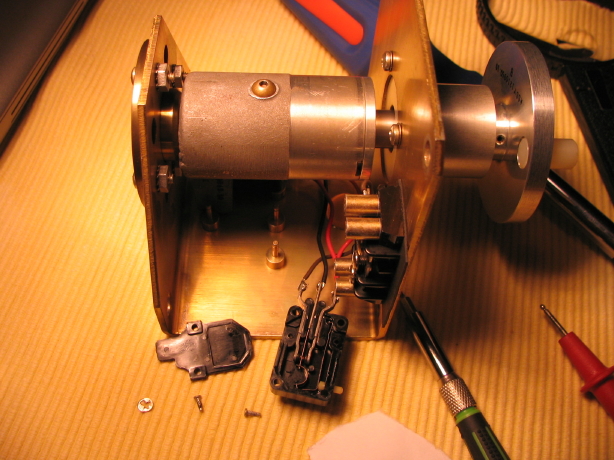
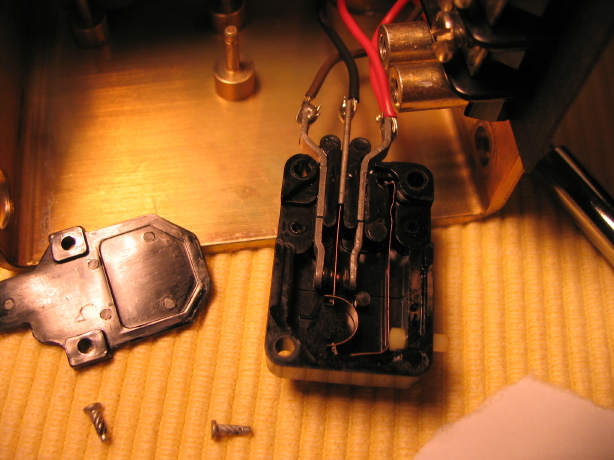

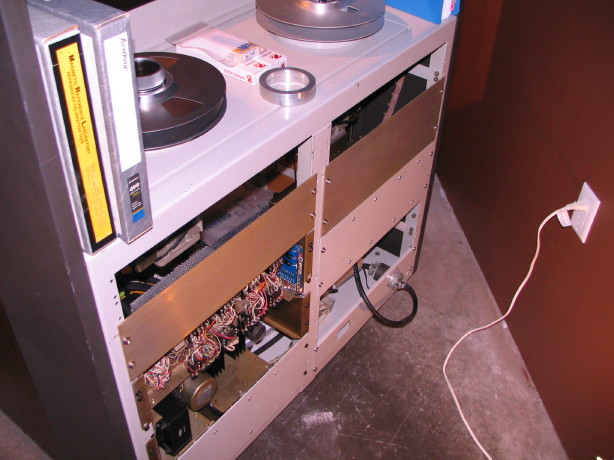
 Here is a shot back when "Phatzilla" was in progress. You can see the cover on the relay box. The open module below the relay box is the transport power supply and that is normally exposed like that.
Here is a shot back when "Phatzilla" was in progress. You can see the cover on the relay box. The open module below the relay box is the transport power supply and that is normally exposed like that.



